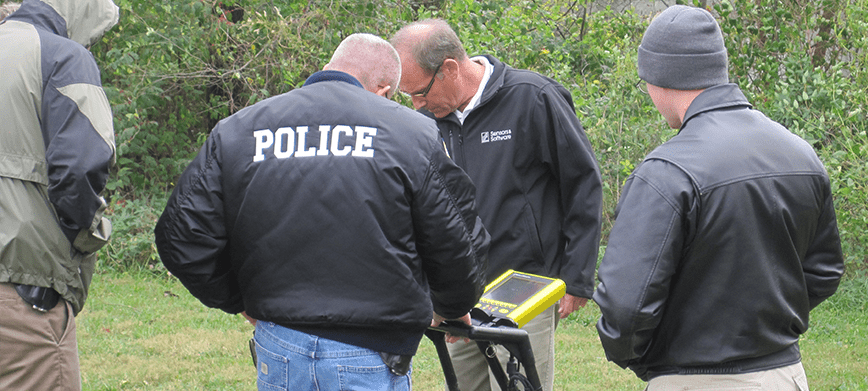Pennsylvania.
After years of police investigations, it was Ground Penetrating Radar (GPR) from Sensors & Software that helped solve the mystery of their whereabouts.
According to media reports, Sandy Stiver, then 14, and her sister-in-law Martha Stiver, 17, disappeared while walking to a corner store in Philadelphia in early 1968. After they did not return, relatives assumed the pair had run away to Kansas City, where the family previously lived.
In August 1968, a body identified as Sandy was found shot five times and dumped off Route 82 in a patch of poison ivy in Berks County, Pennsylvania. Eight months later, the skeletal remains thought to be Martha were found about five miles away in French Creek State Park. Authorities believed both girls were murdered at the same time.
Although authorities deduced the bodies were related because they wore identical sandals, they could not be positively identified and were buried as ‘Jane Does’ in pauper’s graves in Cumru Township, 60 miles northwest of Philadelphia.
A relative reading about the bodies on the National Missing Persons database offered police DNA samples.
Police used an old map to locate the vicinity of the girls’ bodies in the cemetery. Records indicated they were buried in adjacent unmarked graves. Police were hesitant to use heavy equipment to aid in the search since doing so would result in further desecration of the bodies.

After some conversation, a detective suggested using GPR. Investigators on site agreed that augmenting the old map with GPR input would be invaluable in quickly and accurately locating the bodies. The Pennsylvania State Police – along with Berks County Coroner’s Office obtained – Sensors & Software’s ground penetrating radar through the Middle AtlanticGreat Lakes Organized Crime Law Enforcement Network (MAGLOCLEN). FINDAR® GPR was designed with the input of leading police forensic geophysics teams. This system is an evidence collection tool that provides the location and depth of a buried object.
The bodies were exhumed in October 2013. DNA results analyzed by the University of North Texas Center for Human Identification confirmed the remains to be that of the missing teens.
The Berks County Coroner’s Office returned the remains to family members. Sandy’s remains were buried in Ohio – where her family had since moved – while Martha’s were shipped back to her family in Kansas. Police are still searching for the perpetrators who carried out the murders.
Download the case study: Ground penetrating radar guides exhumation
F
INDAR® offers law enforcement officials a means for reliably locating buried evidence, be it a clandestine grave, a firearm, or caches of drugs and money in order to produce evidence to close criminal cases. It is capable of locating metallic and non-metallic items.
A 10-foot by 10-foot area can be searched in less than 30 minutes. Data can be processed and viewed on site to offer immediate evidence recovery.
Sensors & Software offers forensic-focused training with industry experts who have led high-profile
law enforcement evidence searches internationally.








